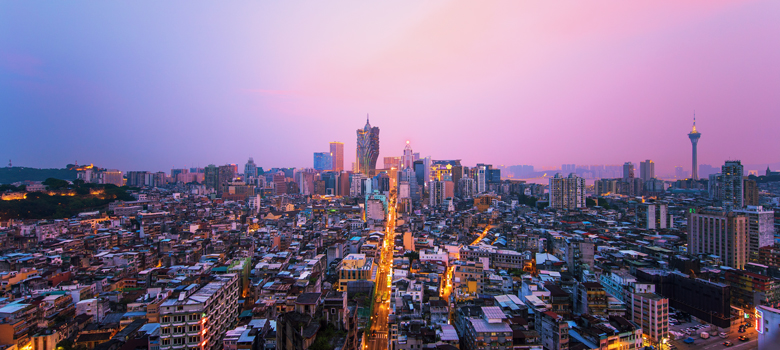
Life
A Marriage of Cultures in Macao
If you speak to anyone who’s visited Macao, on the coast of south-eastern China, you can bet they’ll say, ‘You have to try the egg tarts!’ These sweet sensations are available throughout the city, but the most famous, and the original, examples are found at Lord Stow’s. Selling around 14,000 tarts a day, this legendary bakery was founded in 1989 by Andrew Stow, a pharmacist-turned-baker from Essex.


Wanting to create a version of the Portuguese pasel de nata, Andrew tinkered with the recipe, ending up with a tart similar to the original, but with an English touch. But why, you might reasonably ask, would an English baker want to create a take on a Portuguese staple in an Asian city?
The answer to that question goes to the heart of the history of this fascinating destination.
Trading Partners


Macao was first settled by fishermen and farmers from the Fujian and Guangdong regions of China. Located at the mouth of the Pearl River, it was considered a great trading post and was once a stop on the Silk Road, providing silk for the Romans.
But it was the arrival of Portuguese explorer Jorge Alvares in 1513 that changed the fate of this small region. Having identified Macao’s great trading potential between the East and West, Alvares was followed by Portuguese merchant-explorers in the mid-16th century. Then in 1557, Macao was leased to Portugal as a trading post so the Portuguese could stay, an arrangement that continued until 1999 when it was returned to China as a Special Administrative Region.
For almost 500 years, Macao’s culture evolved to become a unique blend of Chinese traditions with those of its Portuguese tenants, as well as those from Portugal’s trading posts throughout Africa and Asia, not to mention the Jesuit and Dominican missionaries who arrived around the same time.
This means that visitors to Macao are treated to an architectural history like no other. In fact, Macao is home to an incredible 30 UNESCO World Heritage Listed sites. Among them are the ancient A-Ma Temple, built in 1488 and dedicated to the Chinese sea-goddess Mazu. Then there’s Senado Square, a centuries-old meeting place whose pastel-coloured neo-classical buildings create an atmosphere that’s decidedly Mediterranean. The imposing ruins of St Paul’s show the Jesuit influence, while St Dominic’s Church was built by Spanish Dominican priests from Mexico, and the Moorish Barracks once accommodated an Indian regiment from Goa.
A Unique Cuisine

Of course, it wasn’t just their architectural style which the migrants brought with them to Macao, they also introduced a delicious array of spices and ingredients. Using these and the ingredients found locally, they adapted the dishes of their homelands. This melding of cuisines has continued through the centuries to create the unique appeal of Macanese cuisine. In fact, Macao is regarded as the home of the world’s first fusion food and in 2017, UNESCO named it as a Creative City of Gastronomy thanks to its significant culinary heritage.
Visitors to Macao can taste influences from China, Portugal, Africa, India, England and beyond. For instance, African chicken is a local favourite and is said to have been created by a Macanese chef in the 1940s following a trip to Mozambique. Based on African piri piri chicken, it also includes South-East Asian flavours. Then there’s tacho, a Macanese family staple that’s a stew combining boiled meat and sausage in the Portuguese tradition with Southern China’s addition of cured meats, vegetables and balichao shrimp paste.
Another regular on Macanese family tables and a dish that’s found on most Macanese restaurant menus, is minchi. There’s even a saying in Macao that goes, “You only know how to cook when you know how to prepare minchi.” The name is derived from the English word mince, suggesting it has its origins in the English community in Hong Kong – which would also explain why it sometimes includes Worcestershire sauce – but others trace it to Goa. While there are many variations, minchi usually features beef or pork mince and potato served on rice. Try it yourself in the recipe over the page.
Or when you’re after a street snack in the city, the Macanese version of a hamburger, the pork chop bun, or ‘piggy bun’, has its origins in the Portuguese binfana and simply features a plain bun filled with a seasoned pork chop. And when you’ve savoured this savoury snack, what better way to top it off than with one of Lord Snow’s famous egg tarts!
Who would have thought that when they arrived all those centuries ago, the Portuguese traders, along with their trading partners, the various missionaries, and, of course, the Chinese locals, would have created one of the world’s most unique holiday destinations.
The cuisine and architecture of Macao are just the start when it comes to exploring this dynamic city – to find out more, go to visitmacao.com.au